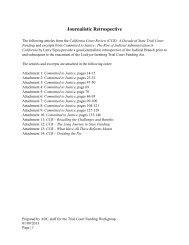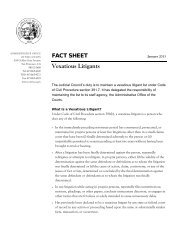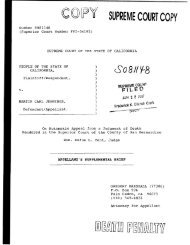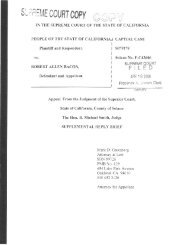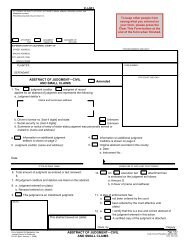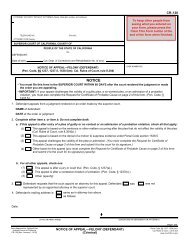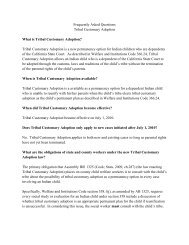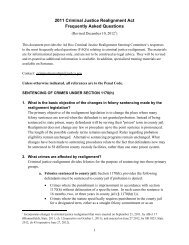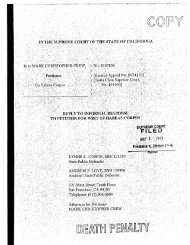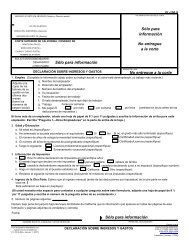Appellant, William Satele, Reply Brief - California Courts - State of ...
Appellant, William Satele, Reply Brief - California Courts - State of ...
Appellant, William Satele, Reply Brief - California Courts - State of ...
Create successful ePaper yourself
Turn your PDF publications into a flip-book with our unique Google optimized e-Paper software.
confuse[d]" (Harris) is no more than an attempt to evaluate how the jury might be<br />
affected by the evidence or instruction in issue.<br />
In referencing People v. Leonard (2007) 40 Ca1.4th 1370, respondent<br />
suggests that appellant is contending that the newly constituted jury was required<br />
to deliberate for the same length <strong>of</strong>time as the original jury. (RB at p. 219.) After<br />
arguing that the new jury need not deliberate the identical time that the former jury<br />
deliberated, respondent begins to list the complexity <strong>of</strong>the issues facing the newly<br />
constituted jury, including victim impact evidence, other misconduct by Nunez,<br />
and other evidence. (RB at pp. 223-224, 227.) Respondent then recites lengthy<br />
sections <strong>of</strong> the instructions given to the newly constituted jury, and rehashes the<br />
events leading up to the substitution. (RB at pp. 224-226.) Respondent then<br />
concludes that "50 minutes was adequate time for the jury to deliberate anew and<br />
reach a verdict." (RB at p. 230.)<br />
In reality, respondent has created a straw man. <strong>Appellant</strong> did not suggest<br />
that the newly constituted jury had to spend the same amount <strong>of</strong> time in<br />
deliberations. However, while appellant does not suggest any set time, a review <strong>of</strong><br />
how quickly the newly constituted jury reached its decisions does shed light on to<br />
whether it is likely that the jurors started their task from the beginning.<br />
As detailed in <strong>Appellant</strong>'s Opening <strong>Brief</strong> (AOB at pp. 243-24), in order to<br />
reach penalty verdicts, after the last alternate juror was seated, the jury had to<br />
review the penalty phase testimony <strong>of</strong> 16 witnesses, including testimony from two<br />
experts witnesses concerning the psychological and social backgrounds <strong>of</strong> the<br />
defendant and victim impact <strong>of</strong> evidence. The jury had to decide whether co<br />
appellant Nunez had committed two crimes as possible factors in aggravation.<br />
The jury may also have had to consider issues from the guilt trial that may have<br />
had an impact in the penalty phase, such as the presence <strong>of</strong> any possible lingering<br />
doubt. It was necessary to review this evidence, and reach a life versus death<br />
decision for two defendants. Under respondent's theory-which is at least as<br />
122



